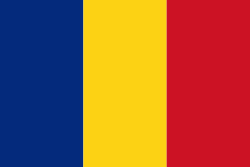Cluj-Napoca, or simply Cluj (Kolozsvár , Klausenburg), is the fourth-most populous city in Romania. It is the seat of Cluj County in the northwestern part of the country. Geographically, it is roughly equidistant from Bucharest (445 km), Budapest (461 km) and Belgrade (483 km). Located in the Someșul Mic river valley, the city is considered the unofficial capital of the historical province of Transylvania. For some decades prior to the Austro-Hungarian Compromise of 1867, it was the official capital of the Grand Principality of Transylvania.
, 324,576 inhabitants lived within the city limits (making it the country's second most populous at the time, after the national capital Bucharest), marking a slight increase from the figure recorded at the 2002 census. The Cluj-Napoca metropolitan area has a population of 411,379 people, while the population of the peri-urban area (Romanian: zona periurbană) exceeds 420,000 residents. The new metropolitan government of Cluj-Napoca became operational in December 2008. According to a 2007 estimate provided by the County Population Register Service, the city hosts a visible population of students and other non-residents—an average of over 20,000 people each year during 2004–2007. The city spreads out from St. Michael's Church in Unirii Square, built in the 14th century and named after the Archangel Michael, Cluj's patron saint. The boundaries of the municipality contain an area of 179.52 km2.
Cluj experienced a decade of decline during the 1990s, its international reputation suffering from the policies of its mayor at the time, Gheorghe Funar. Today, the city is one of the most important academic, cultural, industrial and business centres in Romania. Among other institutions, it hosts the country's largest university, Babeș-Bolyai University, with its botanical garden; nationally renowned cultural institutions; as well as the largest Romanian-owned commercial bank. Cluj-Napoca held the titles of European Youth Capital in 2015, and European City of Sport in 2018.


















